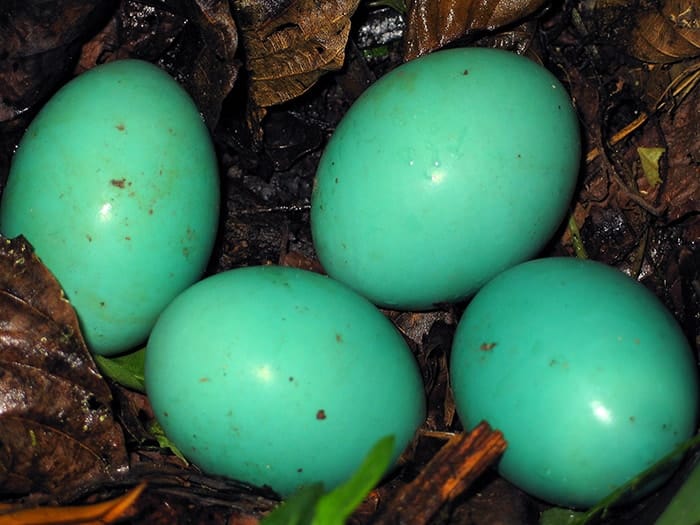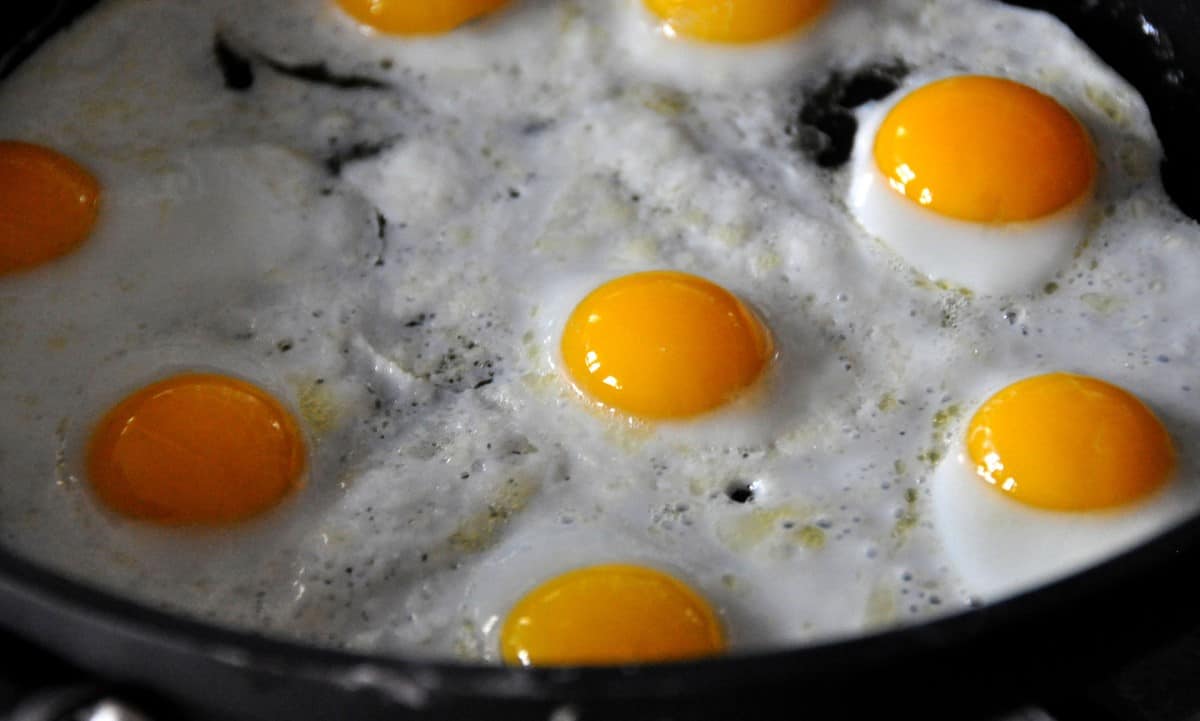
New research shows that the humble egg white could hold the answer to a long-standing mystery about the evolution of gels. In a paper published in Physical Review Letters, scientists at the University of Tübingen led by Frank Schreiber used ultrasmall angle X-ray scattering to show that cooked egg white is dynamic gel that continues to evolve long after solidifying. They attribute the unusual dynamics to rupturing of protein bonds and show that these events are highly correlated. This research has profound implications both for the food industry and the fundamental study of phase transitions.
Cheese, coagulated blood and cooked egg white are all common examples of gels. Though they behave as solids, these materials are mostly liquid; rigidity is imposed by a “skeleton” of solid particles that spans the material in a branched network. Egg whites, for example, start out as proteins swimming around in water, but heat forces them to unfurl and stick together, triggering gelation.
Gels exist out of equilibrium and so continue to evolve by relaxing into lower energy states long after the gelation transition. The group in Tübingen was motivated by a long-standing debate over whether the ageing of gels progresses continuously or via sudden intermittent rupturing of particle bonds. There was no research on the ageing of protein gels because of the challenge posed by studying structures without a single characteristic length scale; it is not clear whether the basic building block of a gel is the individual proteins or the long chains. In fact, the full dynamics can only be captured by studying the gel simultaneously at length scales of both the diameter of a few proteins and the length of the branches in the network (hundreds of nanometres to microns)
X-ray photon correlation spectroscopy (XPCS) is a technique that measures correlation between scattered photons. It is widely used to measure the dynamics of disordered materials but in its conventional configuration would only measure the motion of individual proteins. The researchers adapted XPCS for studying gel dynamics by combining it with ultrasmall-angle X-ray scattering, a state-of-the-art technique that probes up to large length scales.
Separating structure and dynamics
Schreiber and his colleagues performed XPCS on a sample of egg white as it was heated and observed the growth of a branched network structure. The structural evolution of the gel appeared at first to be incompatible with ageing as the complexity of the network and the average size of the branches changed very little with time.
However, far from being static, the gel exhibited intermittent motion. This was too fast to be diffusion and instead indicated the sudden rupturing of the protein–protein bonds. Intriguingly, relative to their size, long chains were more dynamic than single proteins, a behaviour that seems to be unique to this system.
Stress redistribution
These length-scale-dependent dynamics disappear over time, which the researchers believe is a clue as to how the gel can be dynamic without its overall structure changing. Because it is disordered, unusually large stresses become locked into certain regions of the gel. They propose that the rupturing of bonds in these regions redistributes the stresses, reducing spatial fluctuations in the gel without changing its average structure. Over time, as the gel becomes homogeneous, the length-scale-dependent dynamics disappear, and the gel evolves via a larger number of smaller rearrangements.

Nanostructure puts the gloss on avian eggshells
The most striking dynamical behaviour of the gel was that as well as evolving with time, the bond- rupturing events were not independent. Periodic variation in the relaxation time of the gel was observed, this has not been seen before and indicates that the rearrangement events are correlated. Whether this is a particular property of egg whites or a universal gelation behaviour being observed for the first time is not yet clear. It indicates that the gel can be split into substructures; a “fast” gel that mediates bond rupturing and a “slow” gel that preserves the original structure during ageing.
Most research on gel ageing uses either synthetic particles or simulations, but it seems that not for the first time, nature is a more intuitive scientist than we are. On the significance of the research, Schreiber says, “In the future, this will allow us to understand dynamics of different biological macromolecules in a broader range and more fundamentally.” By applying physical principles to these systems, this research could bridge the gap between thermodynamics and biology.
